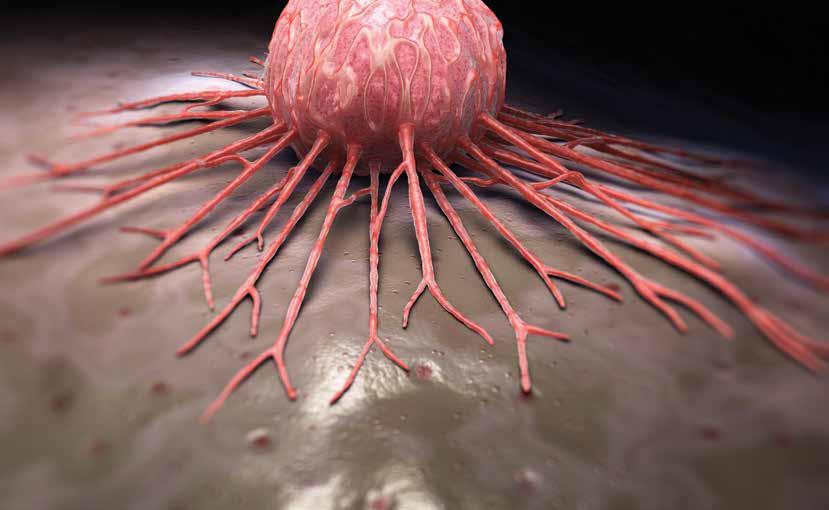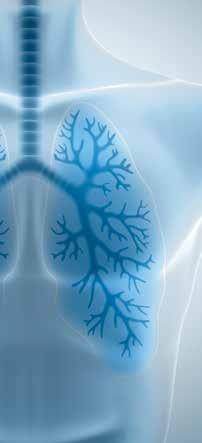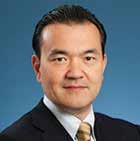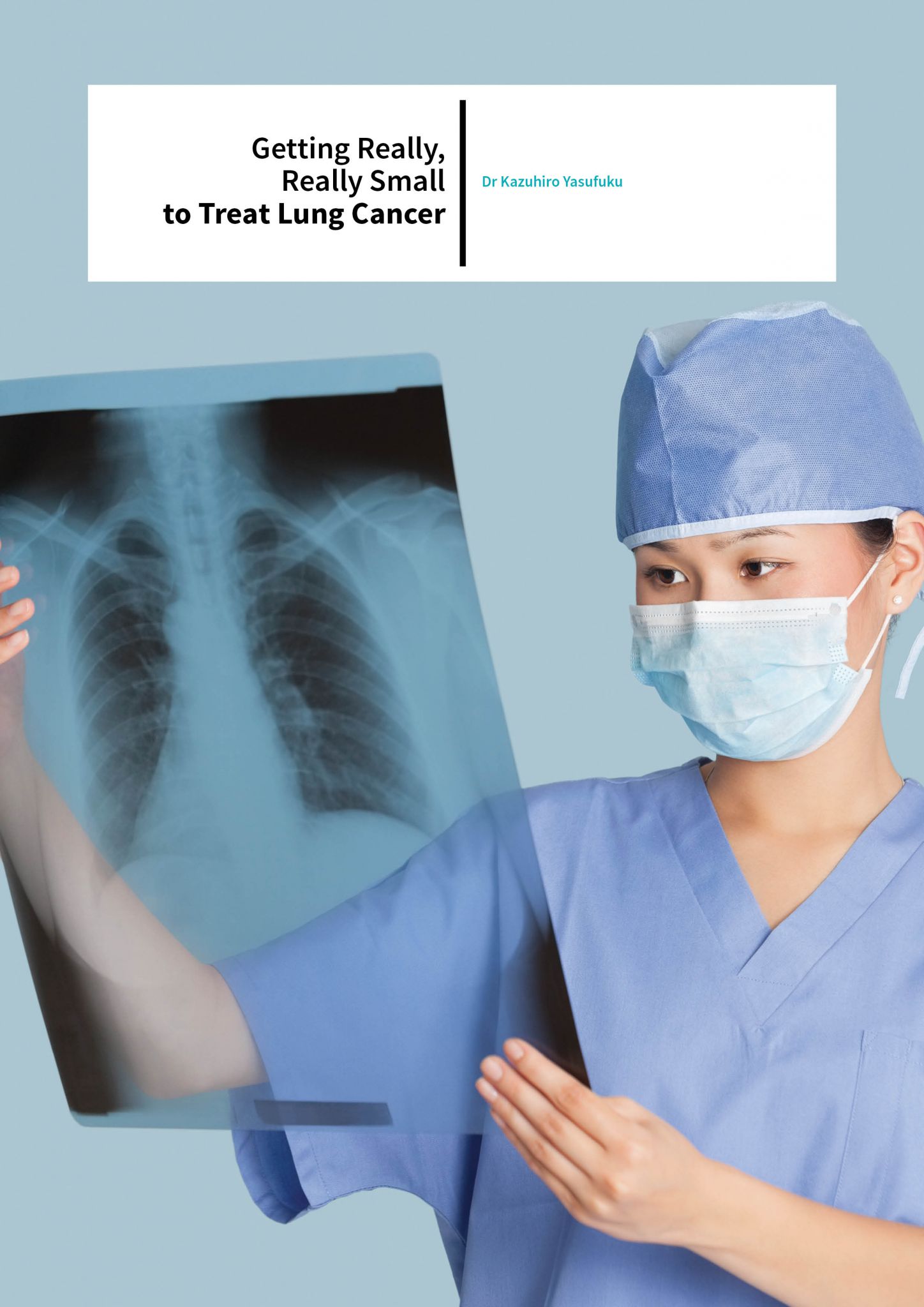Dr Kazuhiro Yasufuku – Getting Really, Really Small to Treat Lung Cancer
Thoracic surgeon and research scientist Dr Kazuhiro Yasufuku and his colleagues at the University of Toronto in Canada aim to use the latest in nanoparticle and high technology to treat lung cancer without major surgery.

Lung Cancer is not Just Any Cancer
How About Making Tiny Holes?
Photothermal ablation



First, Getting into the Chest Without a Scalpel
Porphysome? What’s a Porphysome?
The porphysome is a first-of-its-kind, multifunctional, all-organic lipid nanoparticle discovered by Dr Yasufuku’s colleague Dr Gang Zheng. The traditional role of lipids in this arena has been limited mainly to the use of liposomes – spherical nanoparticles consisting of a lipid bilayer – to deliver chemotherapy drugs. The clinical success of these liposomes has been based on their high biocompatibility, biodegradation and clearance properties, as well as their high therapeutic efficacy or contrast enhancement capabilities. The organic characteristics of lipids allow them to avoid eliciting an undesired immune response and help guarantee safe excretion from the body. A number of drug-loaded liposomes have been approved or are in clinical trial for various cancers. Unfortunately, the role of these lipid preparations is simply that of a passive carrier used to increase the circulation time of chemotherapy drugs and prevent interaction of the drugs with blood cells.
Intraoperative localization



The use of nanoparticles, particularly porphysomes and ICG lyposome, is a quantum leap in our ability to fight lung cancer.
Add ICG Lyposome and Start Working
Meet the researcher

Dr Kazuhiro Yasufuku, MD, PhD
Associate Professor,
Department of Surgery,
University of Toronto, Canada
CONTACT
T: (+1) 416 340 4290
E: kazuhiro.yasufuku@uhn.on.ca
W: http://www.uhnresearch.ca/researcher/kazuhiro-yasufuku
KEY COLLABORATORS
Dr Gang Zheng: Professor of Medical Biophysics, University of Toronto Senior Scientist, Ontario Cancer Institute
Dr Brian Wilson: Professor and Head of Medical Biophysics, University of Toronto Senior Scientist, Ontario Cancer Institute
Dr Robert Weersink: Assistant Professor, Radiation Oncology, University of Toronto Affiliated Faculty, Techna Institute for the Advancement of Technology for Health (Techna)
Dr David Jaffray: Senior Scientist, Princess Margaret Cancer Centre Executive VP Technology and Innovation, University Health Network Director, Techna Institute, Techna Institute for the Advancement of Technology for Health (Techna)
Dr Jinzi Zheng: Assistant Professor, Institute of Biomaterials and Biomedical Engineering, University of Toronto Scientist, Techna Institute for the Advancement of Technology for Health (Techna)
Dr Shaf Keshavjee: Professor, Division of Thoracic Surgery & Institute of Biomaterials and Biomedical Engineering Vice Chair, Innovation, Department of Surgery, University of Toronto
Dr Ming Tsao: Professor, Department of Laboratory Medicine and Pathobiology, University of Toronto Senior Scientist, Ontario Cancer Institute, Division of Applied Molecular Oncology
FUNDING
Canadian Cancer Society
Canadian Institutes of Health Research
Natural Sciences and Engineering Research Council of Canada
Ontario Institute of Cancer
The Physicians’ Services Incorporated Foundation
Olympus Medical Systems Inc.
Intuitive Surgical Inc.
Novadaq Corp.
Veran Medical
REFERENCES
Yasufuku K, Pierre A, Darling G, de Perrot M, Waddell T, Johnston M, da Cunha Santos G, Geddie W, Boerner S, Le LW, Keshavjee S, J Thorac Cardiovasc Surg., 2011, 142, 1393–1400.
Nakajima T, Zamel R, Anayama T, Kimura H, Yoshino I, Keshavjee S, Yasufuku K, Ann Thorac Surg., 2012, 94, 2097–101.
Anayama T, Nakajima T, Dunne M, Zheng J, Allen C, Driscoll B, Vines D, Keshavjee S, Jaffray D, Yasufuku K, PLoS One, 2013, 8, e67355.
Wada H, Hirohashi K, Anayama T, Nakajima T, Kato T, Chan HH, Qiu J, Daly M, Weersink R, Jaffray DA, Irish JC, Waddell TK, Keshavjee S, Yoshino I, Yasufuku K, PLoS One, 2015, 10, e0126945.
Nakajima T, Geddie W, Anayama T, Ko HM, da Cunha Santos G, Boerner S, Wang T, Wang YH, Li M, Pham NA, Tsao MS, Yasufuku K, Lung Cancer, 2015, 89, 110–4.

